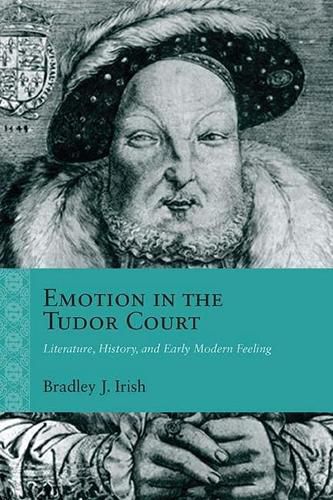Readings Newsletter
Become a Readings Member to make your shopping experience even easier.
Sign in or sign up for free!
You’re not far away from qualifying for FREE standard shipping within Australia
You’ve qualified for FREE standard shipping within Australia
The cart is loading…






Deploying literary analysis, theories of emotion from the sciences and humanities, and an archival account of Tudor history, Emotion in the Tudor Court examines how literature both reflects and constructs the emotional dynamics of life in the Renaissance court. In it, Bradley J. Irish argues that emotionality is a foundational framework through which historical subjects embody and engage their world, and thus can serve as a fundamental lens of social and textual analysis.
Spanning the sixteenth century, Emotion in the Tudor Court explores Cardinal Thomas Wolsey and Henrician satire; Henry Howard, Earl of Surrey, and elegy; Sir Philip Sidney and Elizabethan pageantry; and Robert Devereux, Earl of Essex, and factional literature. It demonstrates how the dynamics of disgust,envy, rejection, and dread, as they are understood in the modern affective sciences, can be seen to guide literary production in the early modern court.
By combining Renaissance concepts of emotion with modern research in the social and natural sciences, Emotion in the Tudor Court takes a transdisciplinary approach to yield fascinating and robust ways to illuminate both literary studies and cultural history.
$9.00 standard shipping within Australia
FREE standard shipping within Australia for orders over $100.00
Express & International shipping calculated at checkout
Deploying literary analysis, theories of emotion from the sciences and humanities, and an archival account of Tudor history, Emotion in the Tudor Court examines how literature both reflects and constructs the emotional dynamics of life in the Renaissance court. In it, Bradley J. Irish argues that emotionality is a foundational framework through which historical subjects embody and engage their world, and thus can serve as a fundamental lens of social and textual analysis.
Spanning the sixteenth century, Emotion in the Tudor Court explores Cardinal Thomas Wolsey and Henrician satire; Henry Howard, Earl of Surrey, and elegy; Sir Philip Sidney and Elizabethan pageantry; and Robert Devereux, Earl of Essex, and factional literature. It demonstrates how the dynamics of disgust,envy, rejection, and dread, as they are understood in the modern affective sciences, can be seen to guide literary production in the early modern court.
By combining Renaissance concepts of emotion with modern research in the social and natural sciences, Emotion in the Tudor Court takes a transdisciplinary approach to yield fascinating and robust ways to illuminate both literary studies and cultural history.